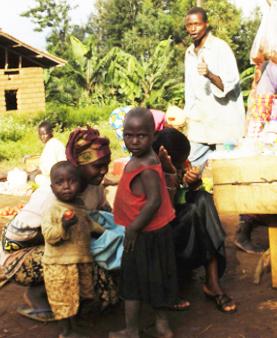Innovative collaboration

Weather variability is a key limiting constraint to investments and the modernization of agriculture in Senegal. The drought-prone Sahel is characterized by irregular rainfall and relatively poor soils. Created in 2008 as a public-private partnership, the National Agricultural Insurance Company of Senegal (CNAAS) is in charge of underwriting crop and livestock insurance. At the request of the Minister of Finance of Senegal, a feasibility study was completed in 2009 by the World Bank to assess the potential of index insurance. This study recommended the development of weather-based index insurance for commercial farmers, and suggested a pilot for groundnut farmers in two departments for which the CNAAS requested in 2011 financial and technical assistance from the World Bank. This pilot is partly funded by the Global Index Insurance Facility (GIIF) and brings together multiple stakeholders, such as government ministries, insurers, farming inputs producers and microfinance institutions to deliver a drought index-based insurance product.
CNAAS leverages the capacity of public actors like the Ministry of Finance and the Ministry of Agriculture for regional institutional support, ANACIM (the National Meteorological Agency) for weather data, DAPSA (a logistics and analytics company) for production and yield data analysis, and a network of producers and MFIs for distribution. All private insurance companies are required to invest in CNAAS. While financial or customer data is not shared among the insurers, public good activities like customer education and awareness campaigns are performed collaboratively. The Senegalese government subsidises premiums up to 50 per cent and policies sold through CNAAS are exempt from value-added tax. The regulatory window of GIIF has provided capacity building to the insurance regulator (DNA), which has allowed CNAAS to receive exemption to pilot-test index insurance products, while the new regulation was being drafted and adopted.
This collective effort has resulted in steady growth. In 2011, 65 farmers and 70 hectares were covered, increasing to 2,000 farmers and 2,700 acres in 2012, 7,000 farmers and 8,200 hectares in 2013, and 8,500 farmers and 9,500 hectares in 2014. CNAAS has improved the product over the 3 years to better suit the needs of the market, using information from stakeholders and feedback from farmers. It revised the payout trigger, varied the days of coverage, and conducted awareness campaigns. CNAAS hopes that these improvements will help extend coverage to 20,000 farmers in 2015.
This emerging insight was produced by the Impact Insurance Facility in collaboration with the Global Index Insurance Facility as part of the partnership between the World Bank Group and the ILO's Impact Insurance Facility, with the support of the Dutch Ministry of Foreign Affairs and the European Union.
